How Dynamic Irrigation Adapts to Real-Time Data
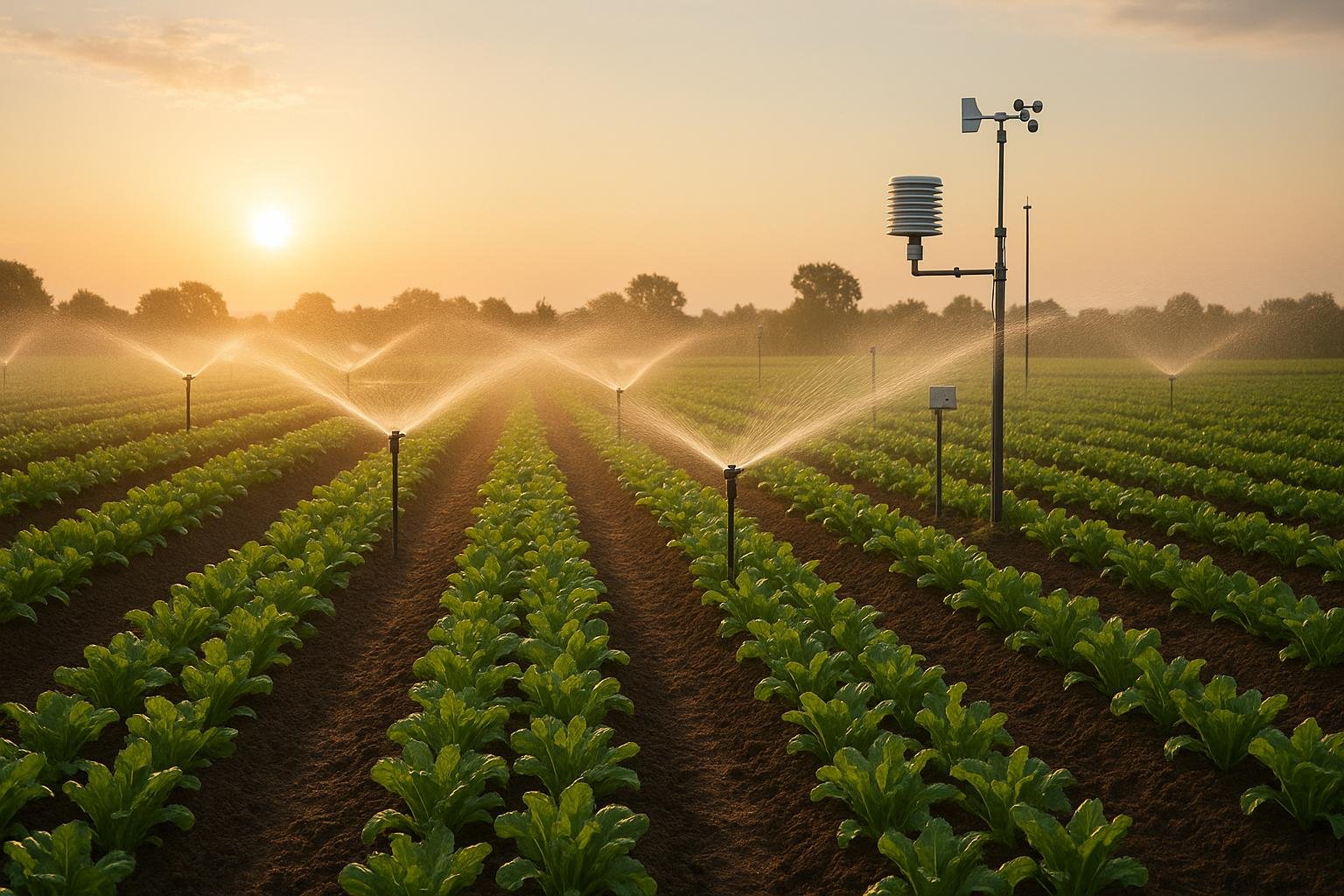
Dynamic irrigation systems are transforming water management by using real-time data to make precise adjustments. Unlike older methods, these systems rely on sensors, weather forecasts, and AI to monitor soil, weather, and plant health. This approach reduces water usage by up to 50%, improves crop yields by 20–30%, and lowers labor costs by 30%. Key benefits include:
- Water Efficiency: Cuts waste by delivering only the needed amount of water.
- Plant Health: Ensures consistent growth and reduces risks like overwatering or drought stress.
- Automation: Saves time and effort with remote monitoring and control.
- Cost Savings: Reduces utility and maintenance expenses.
Dynamic irrigation combines advanced technology like IoT, AI, and satellite data to create smarter, more efficient systems for agriculture and gardening. This is not just about saving water - it's about optimizing resources for better results.
How to Build Your Own Smart Irrigation System: DIY Home Assistant Controlled Valve
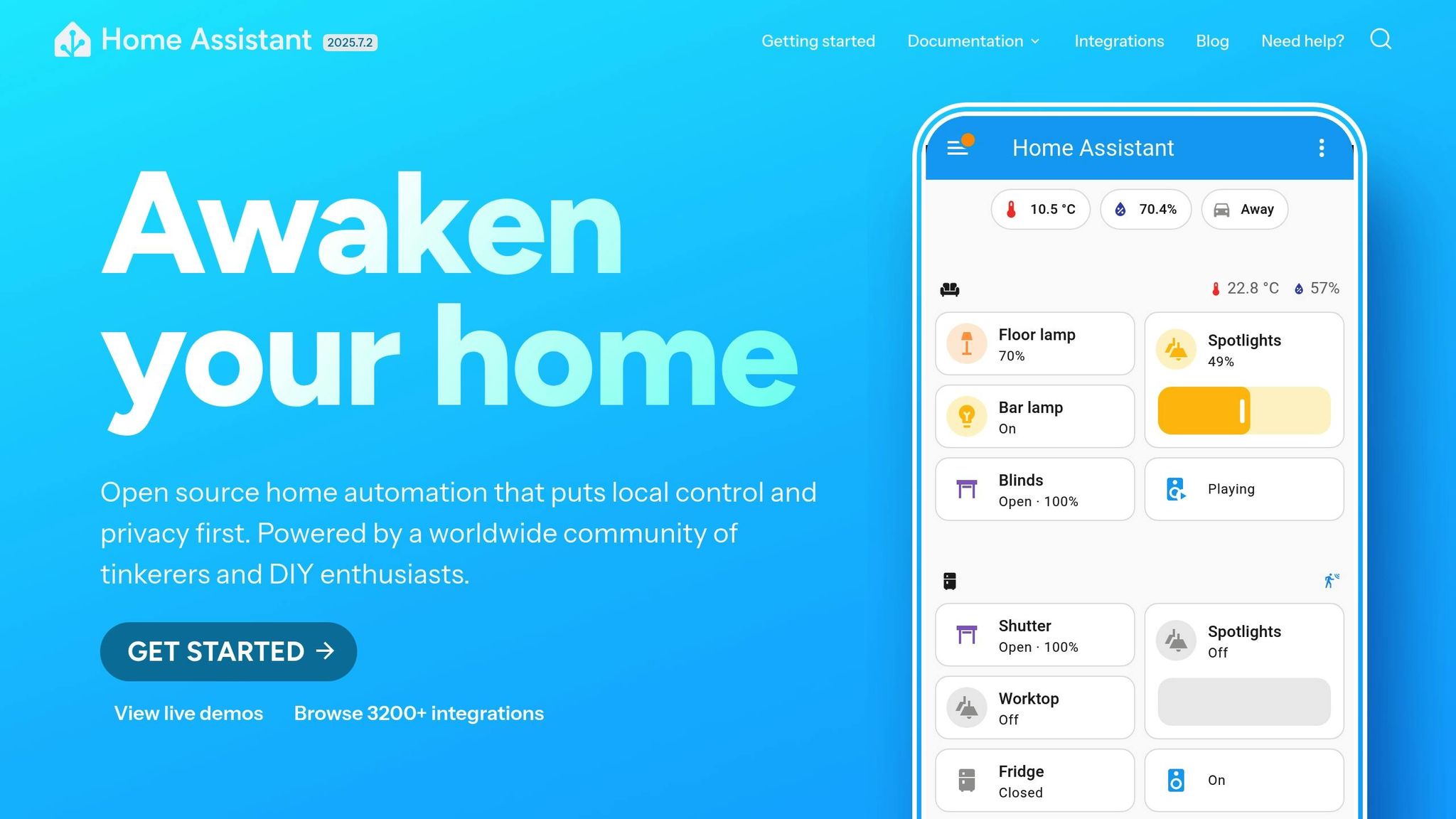

How Real-Time Data Powers Dynamic Irrigation
Dynamic irrigation thrives on its ability to continuously gather and process real-time data from multiple sources. This constant flow of information transforms basic watering systems into smart networks that react instantly to changing conditions. By doing so, they make informed decisions based on what's happening in your garden at that moment. This data-driven approach ensures precise measurement and control, as outlined below.
Key Data Points Monitored
Dynamic irrigation systems monitor several crucial data points that directly affect plant health and water efficiency. Soil sensors play a vital role by detecting moisture levels and other key metrics, determining when and how much water each area of your garden requires.
Weather sensors track temperature, humidity, wind speed, and rainfall patterns to identify climate-related risks [5]. For example, if a weather station detects incoming rain, the system can pause irrigation automatically to avoid overwatering. Temperature and humidity data also help calculate evapotranspiration rates, which measure how quickly plants lose water.
Plant health monitoring takes things a step further. Plant health sensors, which can be embedded in plants or attached to leaves, measure chlorophyll content, leaf temperature, and transpiration rates. These insights help detect water stress, diseases, or pest activity [5]. As David González Maldonado, a grower at NatureSweet, explains:
"Knowing the temperature of the plant can make the difference between stress and maximum photosynthesis." [6]
Remote sensing technologies add even more depth to data collection. Satellite imagery offers continuous monitoring over large areas, providing insights into crop growth, soil moisture, and vegetation health [5]. Meanwhile, drones capture high-resolution images to pinpoint localized issues like nutrient deficiencies, pest outbreaks, or irrigation problems [5].
Technologies for Data Collection
Modern tools like IoT devices, cloud-based platforms, and GIS systems integrate sensor and weather data to streamline irrigation management [2][5]. These technologies create a network of sensors throughout your garden, all communicating with automated controllers. This setup allows for remote monitoring and control through mobile apps or web-based interfaces [2].
Data-Driven Decision Making
The real magic of dynamic irrigation lies in how AI and machine learning algorithms analyze the collected data to optimize watering schedules and flow rates [2]. These systems don’t just gather data - they learn from it, identifying patterns and predicting risks using input from sensors, satellites, and drones [5].
AI models process data like soil moisture, temperature, and weather forecasts to create dynamic irrigation plans [3]. Advanced algorithms refine water schedules by combining sensor data with real-time forecasts.
These systems go beyond basic automation. They classify garden areas into zones - risky, precautionary, or optimal - allowing for strategic resource allocation [3]. This approach ensures efficient water use across the entire irrigation network [3].
The results speak for themselves. In Nebraska, researchers developed an automated irrigation scheduling system that saved 10.6-33.5% of water during dry seasons using an ET-water balance method. A soil moisture-based approach in the same study saved 7.2-37.4% of water under various weather conditions [8]. Similarly, in China's Hetao Irrigation District, a real-time irrigation system that combined computer models with live observations delivered better economic returns while using less water compared to traditional methods [7].
As the Sustainability Directory highlights:
"Data-Driven Irrigation allows agricultural producers to precisely manage water application, optimizing usage and improving crop outcomes through real-time environmental insights." [4]
Benefits of Dynamic Irrigation Systems
Dynamic irrigation systems offer tangible advantages that go beyond simple automation. By optimizing water use, improving plant health, and reducing maintenance, these systems can transform the way water is managed in agriculture and gardening.
Water Conservation
Dynamic irrigation systems are designed to save water by delivering just the right amount based on real-time soil and weather data. The UC Marin Master Gardeners emphasize that "drip irrigation is the most efficient, water-saving method" [1], helping to eliminate issues like runoff, evaporation, and erosion that often occur with traditional watering methods.
Smart irrigation systems can cut water usage by as much as 70% compared to conventional methods [13]. Micro-irrigation systems further boost water efficiency by 30-70% [11]. For example, drip irrigation typically uses only half the water of flood irrigation while providing better results directly to root zones [9]. In practice, regions like California’s Central Valley and Australian vineyards have reported water savings of 20-50% using drip systems [11]. Similarly, data from the Chinese Ministry of Water Resources highlights a 40% improvement in water efficiency in water-scarce areas [11].
Dynamic systems also address a common challenge: identifying water issues before plants show visible signs of stress [1]. Smart controllers and flow meters monitor water delivery in real time, adjusting flows automatically when sensors detect sufficient soil moisture or rainfall. This level of precision eliminates the guesswork and overwatering often associated with traditional methods, directly supporting healthier plants and higher yields.
Better Plant Health and Growth
These systems create the perfect growing conditions by managing moisture levels with precision. By delivering the right amount of water at the right time, dynamic irrigation ensures consistent crop growth and uniformity in size, height, and maturation [10]. This is especially critical for crops like fruits, vegetables, and nuts, which thrive under optimized irrigation [10].
The results speak for themselves. Studies show that precision irrigation can boost crop yields by up to 20% [10]. Research from the International Water Management Institute (IWMI) in Sub-Saharan Africa found that combining drip irrigation with proper agronomic practices led to yield increases of up to 130% for crops like tomatoes, onions, and maize. Similarly, the Indian Council of Agricultural Research (ICAR) found that micro-sprinkler systems outperformed traditional flood irrigation in both water use efficiency and crop yields [11].
Traditional watering methods often lead to over- or under-watering, which can stress plants, cause root rot, or result in drought-related damage [10]. Dynamic systems avoid these pitfalls by delivering water directly to the root zones, reducing the risk of disease and weed growth by keeping foliage dry [12]. Research published in the Journal of Horticultural Science and Biotechnology confirms that micro-sprinkler systems not only improve fruit yield but also enhance quality by maintaining ideal soil moisture and reducing disease risks [11].
Cost and Labor Savings
The benefits of dynamic irrigation extend to cost and labor reductions. Automation minimizes manual effort and utility costs, providing a strong return on investment. There’s no need for daily watering schedules or constant monitoring, as the system handles these tasks automatically.
For instance, a Nebraska study found that irrigation scheduling can reduce water and energy costs by an average of 35% [16]. A Midwest corn and soybean producer in 2023 reported saving 22% on water usage compared to the previous year by using real-time data to tailor irrigation to specific field needs - all without affecting crop yields [16].
Remote monitoring adds another layer of convenience. With internet connectivity, users can adjust irrigation settings from anywhere via smartphone apps or web portals [14][15]. This flexibility allows for quick responses to weather changes or system alerts without being tied to the garden or field.
Dynamic systems also help reduce plant replacement costs by preventing stress-related losses. Healthier plants require fewer interventions, less fertilizer, and minimal pest management, as strong plants are naturally more resilient. Additionally, automated scheduling based on real-time data ensures that water is distributed efficiently, avoiding both overwatering and drought stress [13][14]. Together, these features create a more productive and manageable growing environment with minimal waste and effort.
sbb-itb-4d6a8dd
🚀 Ready to Reinvent Your Garden?
Join thousands of homeowners who have transformed their gardens using our AI design tool. Upload one photo to explore endless possibilities.
Get your AI garden designs →Using Dynamic Irrigation with AI-Powered Garden Tools
AI-powered garden design platforms are revolutionizing how homeowners and landscapers approach garden planning by integrating dynamic irrigation systems tailored to specific needs.
Custom Garden Design and Irrigation Mapping
Platforms like AIGardenPlanner are changing the game with their ability to create irrigation zones optimized for local climates and plant-specific requirements. By analyzing garden photos alongside data like sunlight exposure, wind patterns, and soil conditions, these tools generate detailed landscape designs. They even suggest strategic sensor placements and precise irrigation zones, making the process much more efficient.
This approach doesn't just save time - it’s smart. For instance, AIGardenPlanner’s algorithms can spot differences within a yard, such as shaded versus sunlit areas, and propose irrigation strategies that suit each zone perfectly. To get the best results, users should start with accurate measurements and clear images of their garden space. Once that’s done, the platform can recommend eco-friendly materials, efficient irrigation systems, and plants suited to the environment.
What’s more, these designs ensure that irrigation plans cater to the specific needs of each plant.
Plant-Specific Watering Recommendations
AI tools go a step further by offering tailored planting and watering schedules. These systems analyze a range of data - such as soil moisture levels, weather forecasts, plant evapotranspiration rates, and health indicators - to determine exactly how much water each plant needs.
Take the AI Plant Advisor feature from AIGardenPlanner. It provides personalized plant recommendations based on your location, climate, and preferences. This ensures that irrigation systems deliver water based on a plant’s unique requirements rather than using a one-size-fits-all approach. The result? Water consumption can drop by up to 50% compared to traditional methods. Plus, plant identification apps powered by AI boast over 90% accuracy when identifying species.
For the best outcomes, it’s important to define your maintenance preferences early on. This allows the AI to fine-tune recommendations to match your care routine.
Complete Growing Guides
AI platforms don’t stop at irrigation - they also provide comprehensive growing guides that adapt to both seasonal and plant-specific needs. These guides cover more than just watering schedules. They include details like fertilization timing, seasonal adjustments, and growth pattern predictions. When paired with dynamic irrigation systems, this information supports automated programming that evolves as plants grow and weather conditions shift.
The benefits are impressive. AI-driven irrigation systems can save 30–50% of water and boost crop productivity by 20–30%. They also reduce chemical usage by up to 50%, which is better for the environment. For example, the Smart Orchard Spray Application project demonstrated how IoT-based precision irrigation achieved 14–26% water savings while improving overall resource efficiency.
To make the most of these tools, it’s essential to set a clear budget. AI platforms can balance advanced system features with cost-effective solutions, ensuring that recommendations align with both your goals and finances.
Conclusion: Improving Garden Productivity with Dynamic Irrigation
Dynamic irrigation systems are changing the way we manage water in gardens, using real-time data to deliver precise care. This not only benefits gardeners but also has a positive impact on the environment.
Studies indicate that AI-powered irrigation can cut water usage by as much as 99.5% during critical growth phases while boosting yields by up to 20%.
"Digital technologies are playing an increasingly central role in the management and use of water in agriculture... By using real-time data from sensors and satellite imagery, farmers can make informed decisions that lead to more efficient resource use and improved crop management." – Agricultural Water Management [17]
These systems do more than just conserve water. They also reduce labor costs by 30% and waste by 40%, all while adapting instantly to changes in soil moisture, weather, and plant needs [18].
AI tools like AIGardenPlanner take this a step further by integrating smart design with dynamic irrigation. They create customized plans based on your garden’s unique plants, soil, and climate, making it easier to maintain a thriving garden.
Beyond saving water, these systems help lower CO2 emissions and strengthen ecosystems - an essential step as water scarcity is expected to affect one in four people by 2050 [19] [20].
By adopting dynamic irrigation, you can reduce water usage by up to 50% while improving plant health and productivity. When combined with AI tools, your garden becomes not only more efficient but also more cost-effective and environmentally friendly [18].
The future of gardening lies in automation, real-time data, and AI-driven solutions. Investing in these technologies today sets the foundation for a more efficient and sustainable garden tomorrow.
FAQs
How do dynamic irrigation systems adjust water usage for different plants?
Dynamic irrigation systems rely on real-time data from sources like soil moisture sensors, weather forecasts, and other environmental inputs to pinpoint exactly how much water each plant needs. These systems analyze the data and automatically adjust water flow, ensuring plants get just the right amount of hydration - no more, no less.
This method doesn’t just keep your garden thriving; it also saves water, offering a resource-conscious solution for today’s gardeners.
How does AI improve dynamic irrigation systems and help conserve water?
AI transforms irrigation systems by leveraging real-time data like soil moisture, weather predictions, and plant health indicators to fine-tune water distribution. This precision ensures plants receive just the right amount of water, cutting down on waste and boosting efficiency.
With automated features such as leak detection and overwatering prevention, AI reduces water usage while keeping gardens in peak condition. This intelligent method not only conserves resources but also promotes eco-friendly gardening, helping you maintain a lush, healthy garden with minimal effort.
How can dynamic irrigation systems be added to an existing garden, and what are the first steps to get started?
Dynamic irrigation systems can easily work with most existing garden setups, helping you use water more efficiently and keep your plants thriving. To begin, take a close look at your current irrigation system and pinpoint areas that could use some upgrades or adjustments.
The next step is to select smart controllers and sensors that fit with your setup. These tools track important details like soil moisture levels, weather patterns, and the specific water needs of your plants. Once you’ve got them in place, link them to a central control system. This connection allows for real-time monitoring and automatic adjustments to water flow, ensuring your garden gets just the right amount of hydration. The result? Healthier plants, less water waste, and a more productive garden.
Related posts
Related Articles
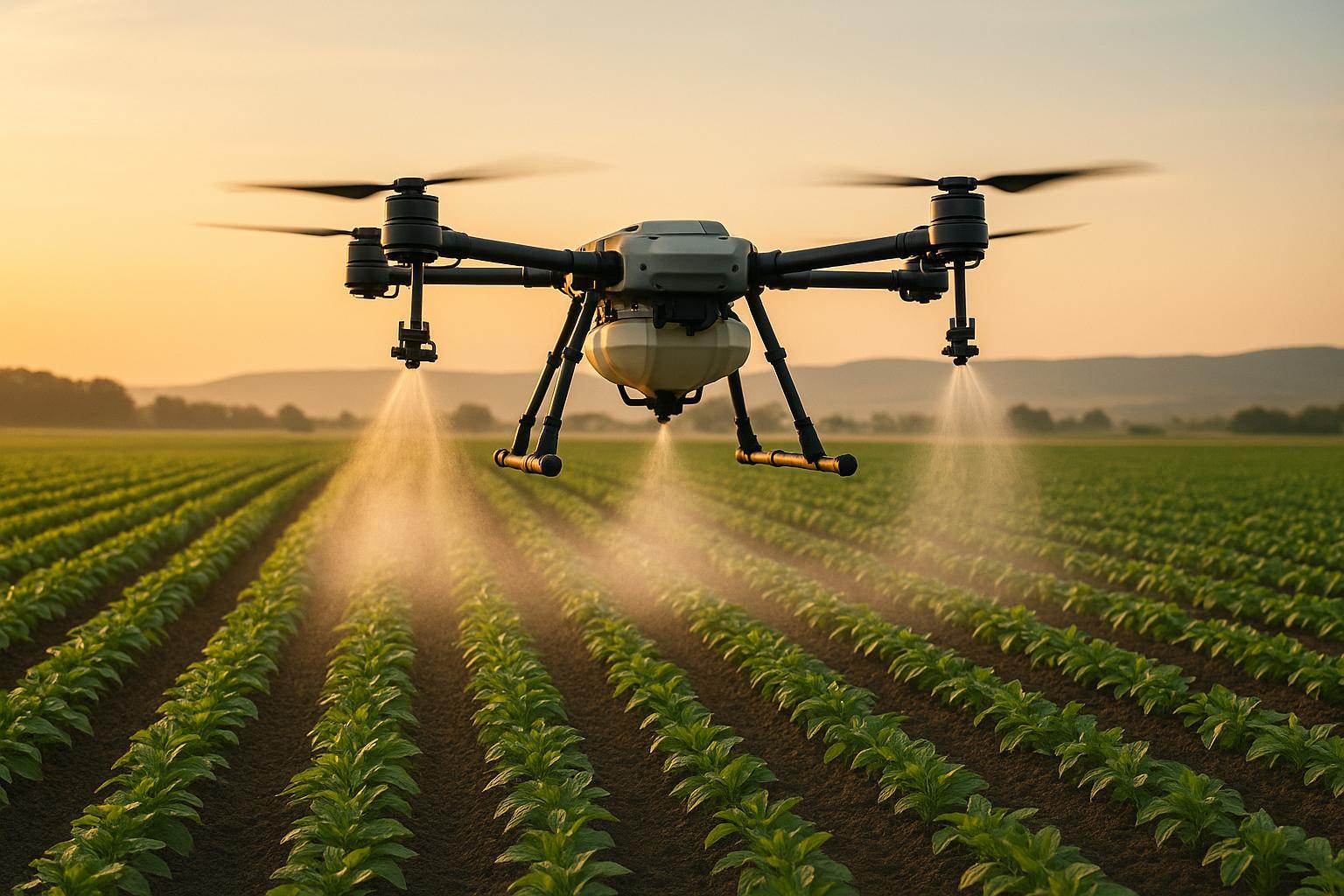
Precision Spraying: AI Drift Reduction Tips
Explore how AI technology enhances precision spraying in agriculture, reducing pesticide drift and improving efficiency for sustainable farming.
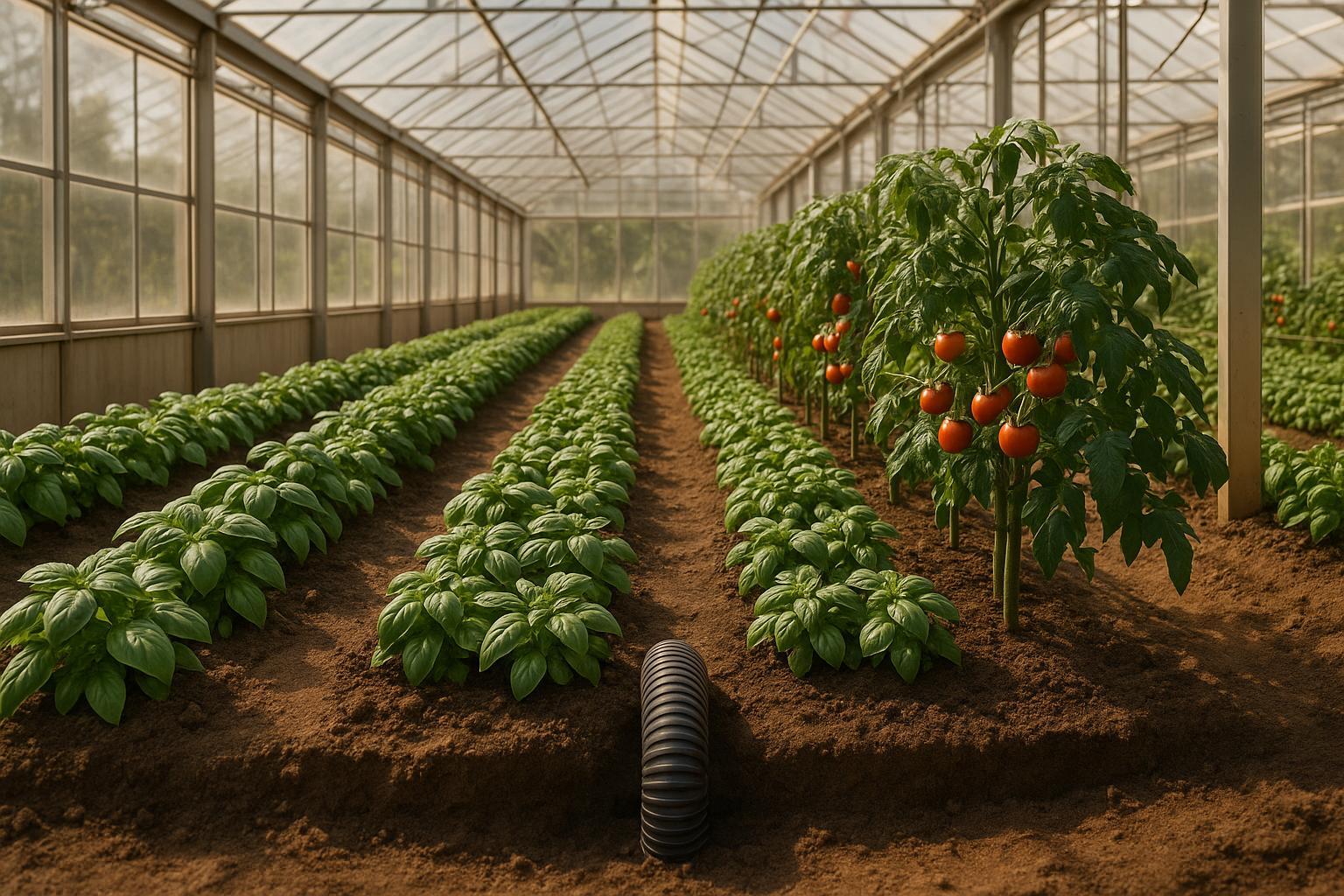
Companion Planting with Geothermal Climate Control
Explore how geothermal climate control enhances companion planting by creating optimal growing conditions, boosting yields, and reducing energy costs.
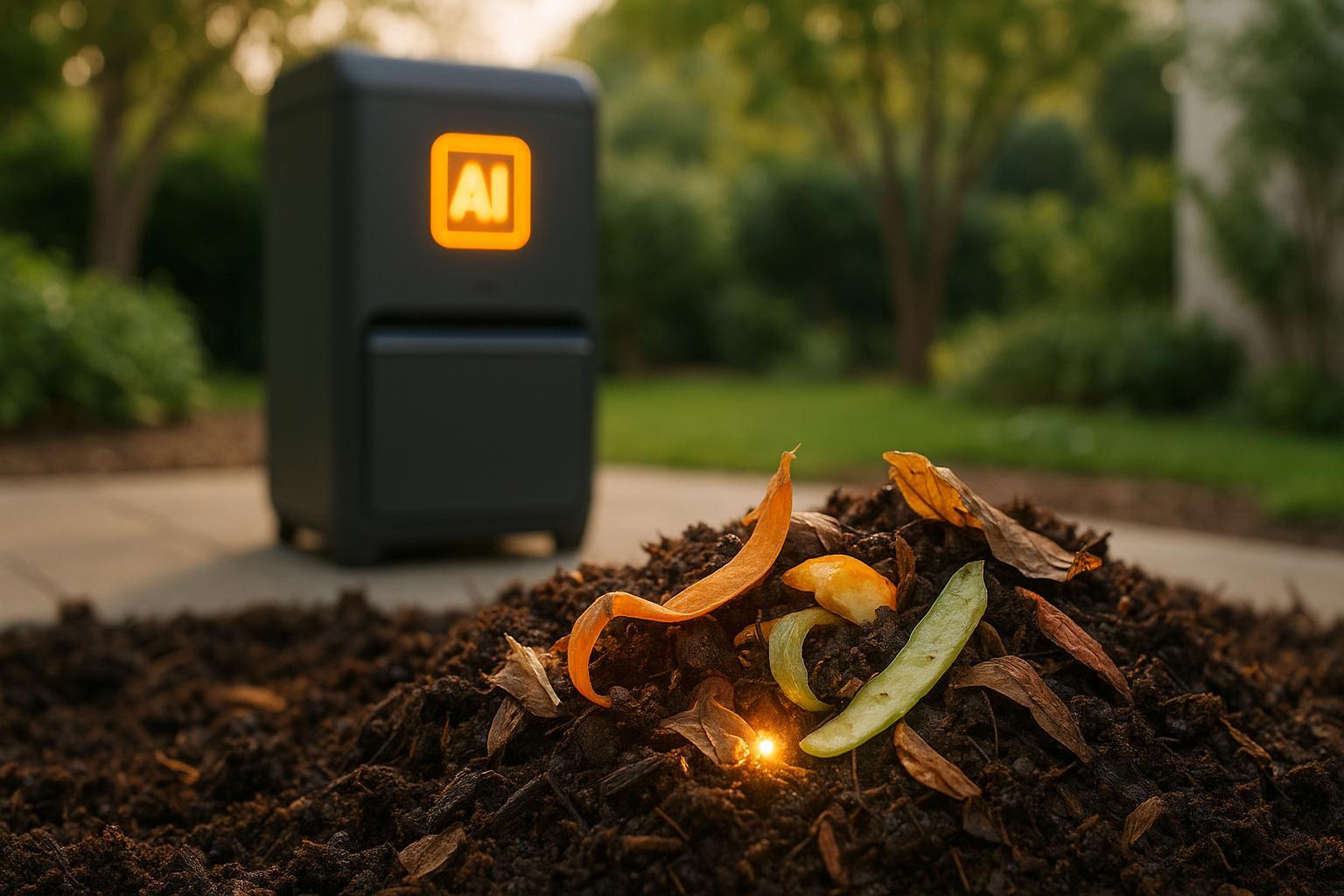
AI Composting: How It Works
Explore how AI composting enhances efficiency, reduces emissions, and transforms organic waste into high-quality compost through advanced technology.
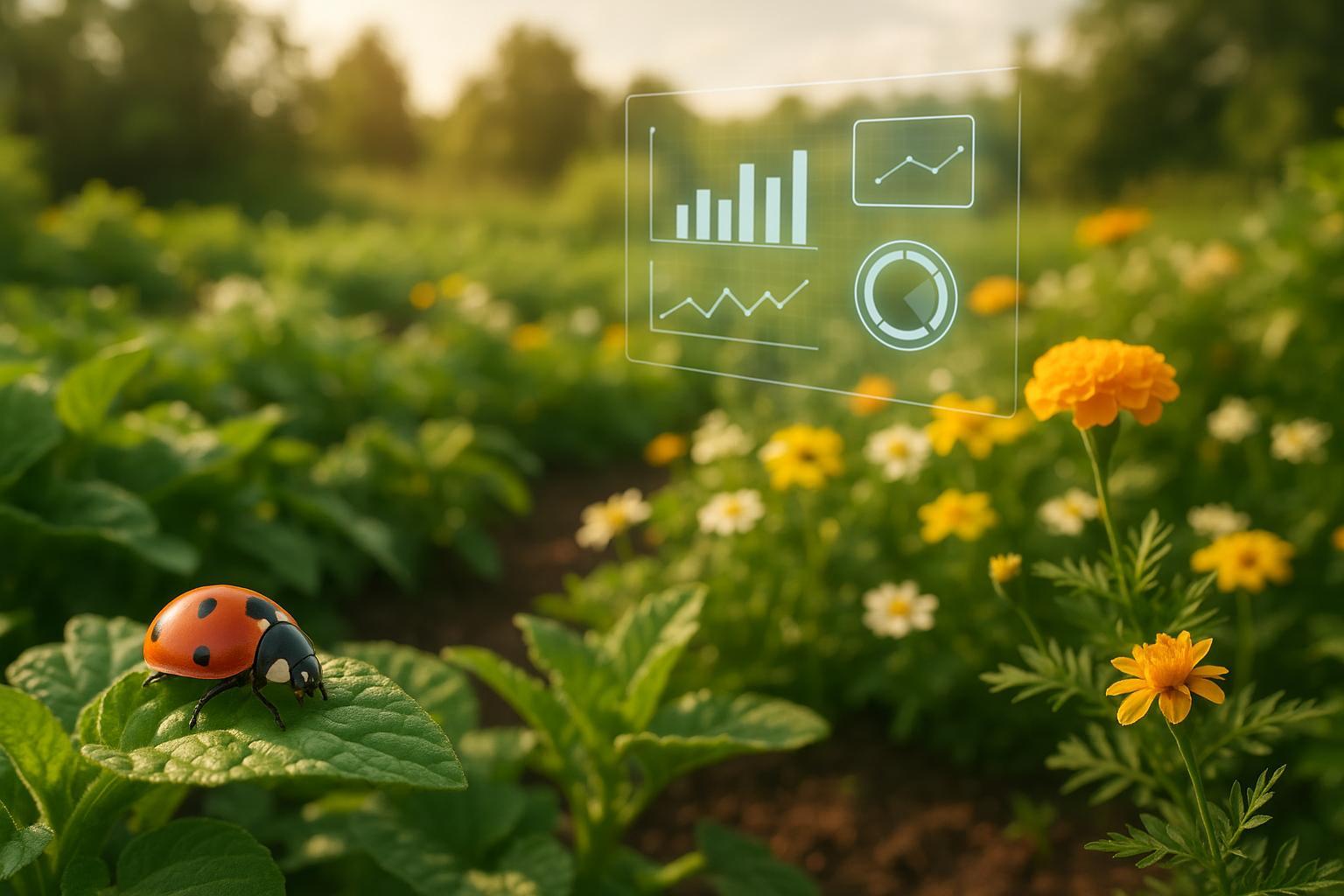
AI and Biological Controls: How They Work Together
Explore how AI enhances biological pest control, promoting sustainable gardening while effectively managing pests with minimal environmental impact.
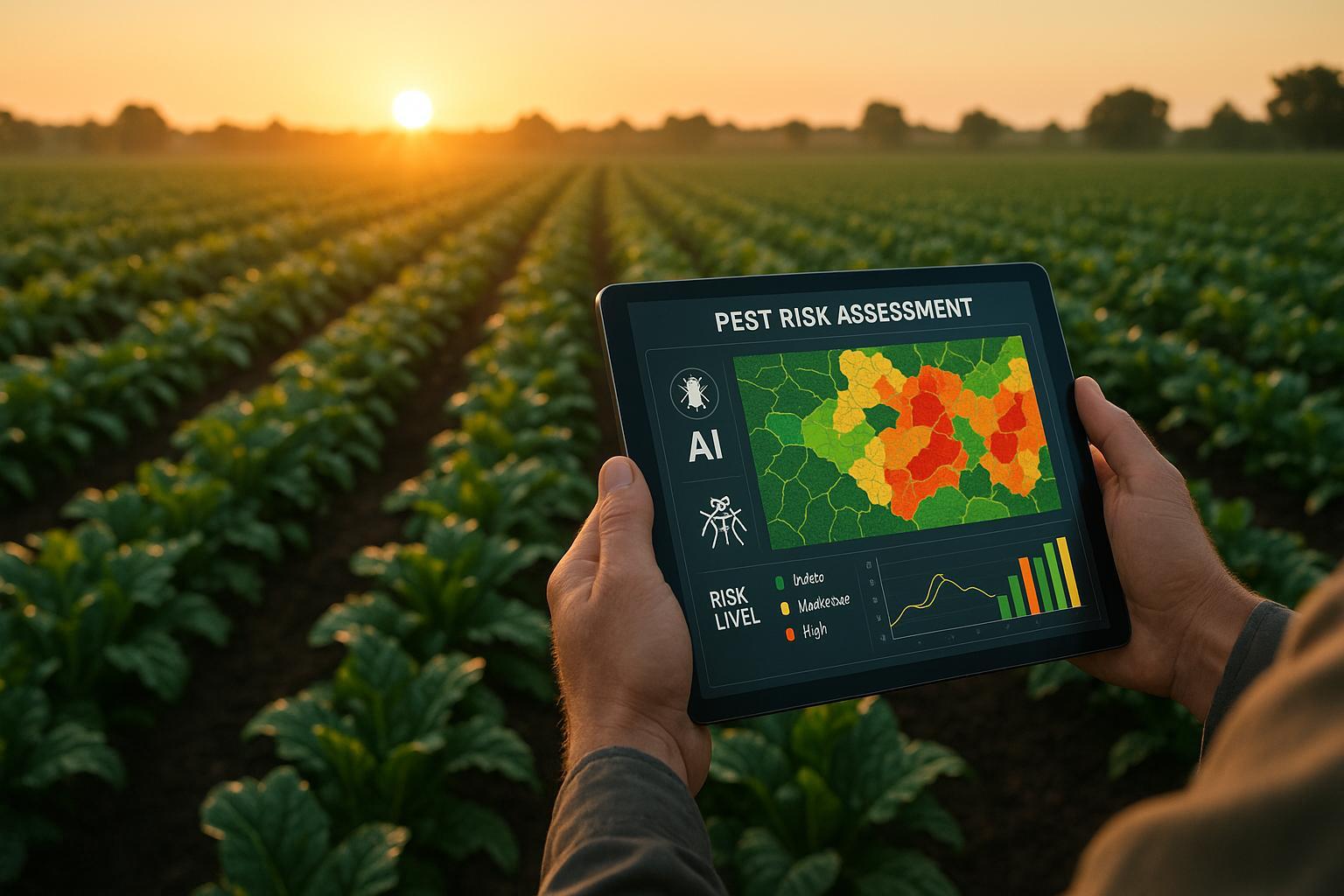
AI Tools for Pest Resistance Risk Assessment
Explore how AI tools are transforming pest management for farmers, reducing pesticide use and enhancing crop yields through advanced technology.
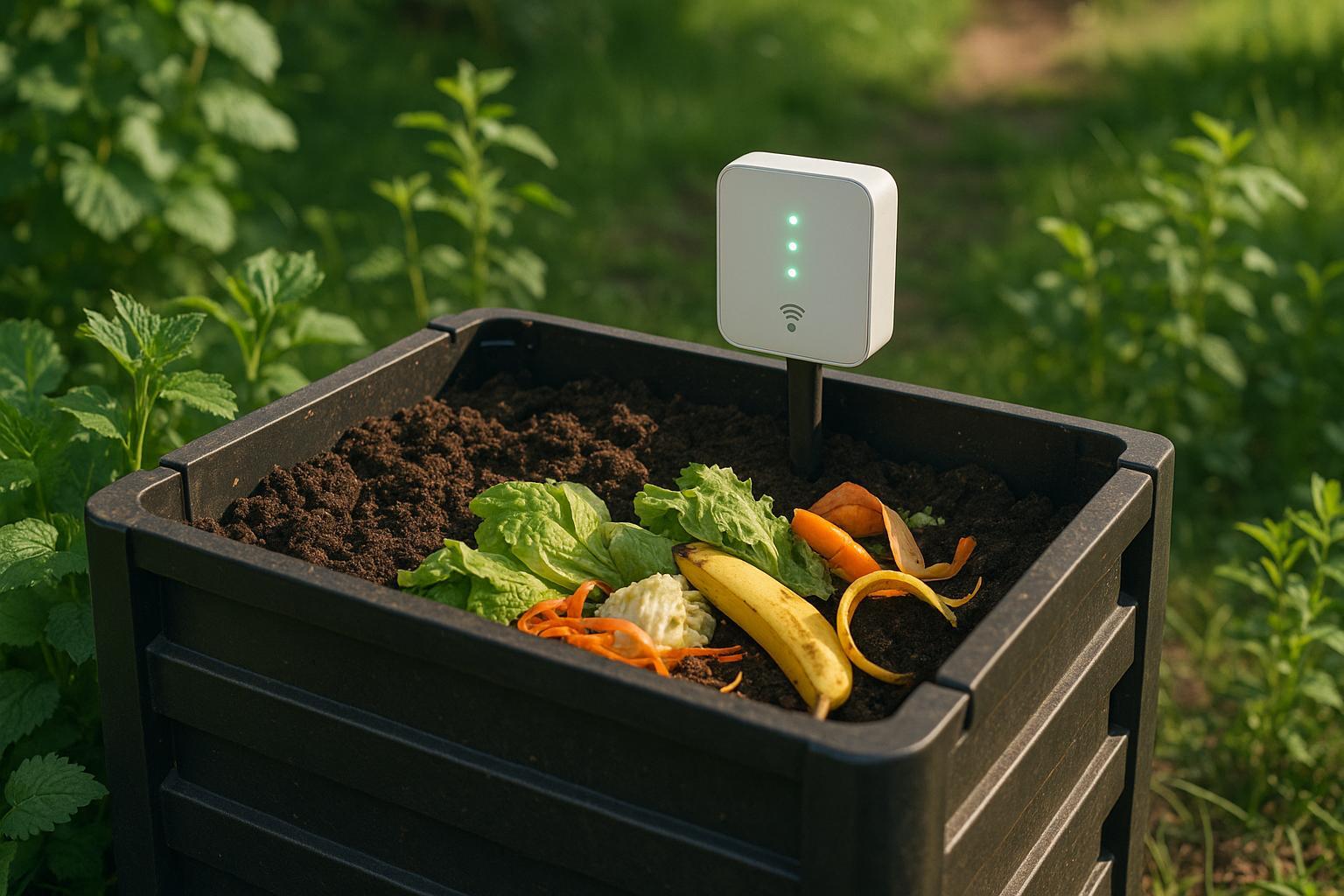
Predictive Analytics for Compost Efficiency
Explore how predictive analytics enhances composting efficiency and quality through real-time data monitoring and machine learning techniques.